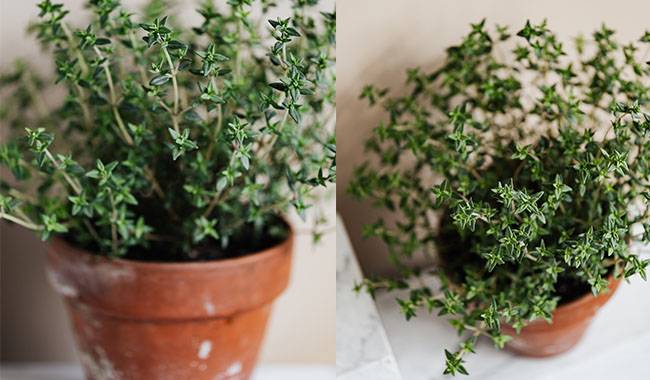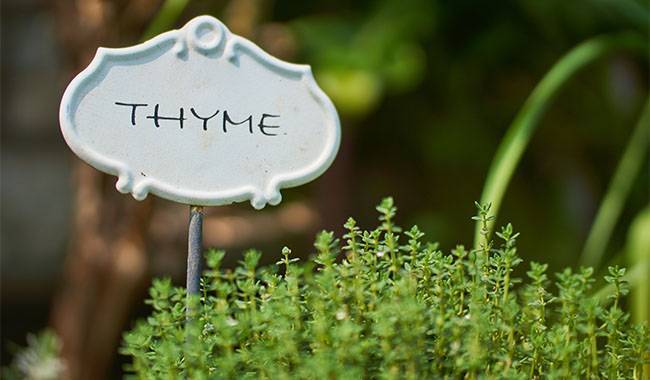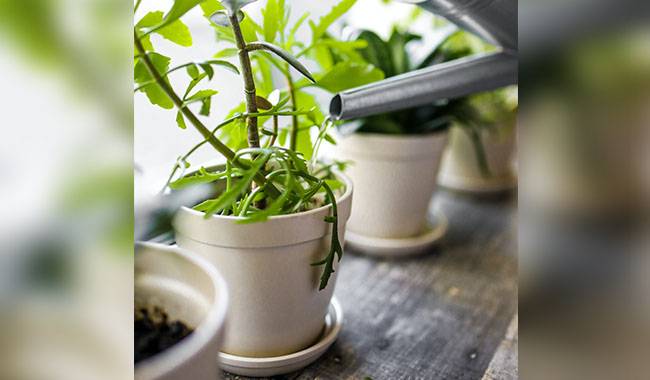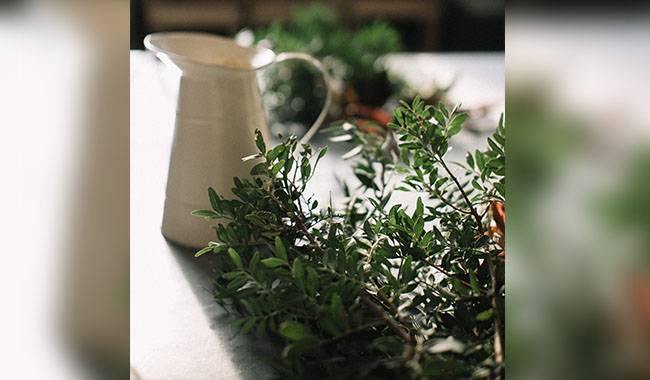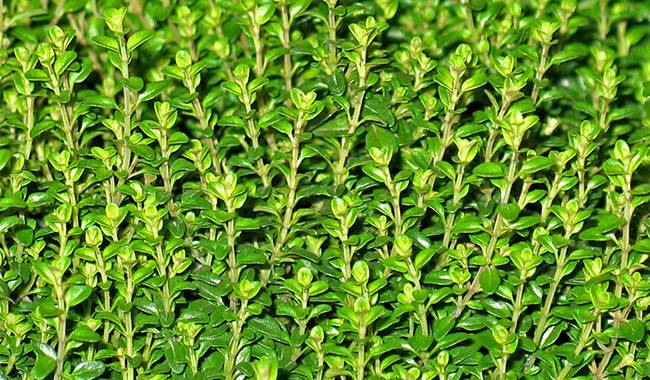
Thymes or Thymus (plant)? What is the correct name? The correct way is that under these names “Thymus (plant)” has the same plant, more precisely, a genus of plants (thymus) from the mint family Lamiaceae.
There are many other folk names associated with the magical properties of this small shrub that secretes large amounts of aromatic substances. Thyme is considered to be one of the most important essential oil crops. They have culinary, medicinal, and ornamental uses and the species most commonly cultivated and used for culinary purposes is Thymus vulgaris.
This paper will discuss the cultivation of thyme and its use in landscaping, culinary and medicinal purposes.
WHAT IS THYME?
The genus Thymus has several hundred species and is found in temperate regions of Europe, Asia, and North Africa.
It is a small evergreen shrub that grows 4-16inch (10-40 cm) tall. A characteristic of thyme is its herbaceous soft stems, which lie on the ground and are only slightly raised. It expands outward rather than upward and tends to invade the space around it rather forcefully.
As it grows, the stem becomes woodier. Because there are so many different kinds of thyme, it is not easy to describe. Let’s say that the leaves can be round, oval, elongated, oblong, and sometimes serrated. But they are always stiff and small – up to 0.4inch (1cm).
Thyme produces small white, pink or purple flowers in summer. The wonderful thing about thyme is that it grows quickly from a small delicacy to an entire bush, forming a dense mat. And the slightest touch to it can cause an explosion of scent. Although it does not require any care from you, it brings many benefits.
CONDITIONS AND CARE OF THYME IN THE GARDEN
First of all, thyme should be planted in an open, well-lit, and warm place. Only there will it grow well, look attractive and accumulate the maximum amount of essential oils.
It will survive in shade and semi-shade, but the stems will elongate, it will not flower, and its scent will fade.
Don’t plant it in greasy, fertilized, too fertile soil. After all, if you remember its natural requirements, it settles and grows on rocky slopes, grasslands, and even deserts where, frankly, there is no smell of manure.
So, if you have soil you are proud of, on which cucumbers, tomatoes, and potatoes grow well, in order to grow thyme you will have to artificially impoverish it.
Just add a lot of sand in and around the hole at planting time. On the one hand, this will reduce fertility, but on the other hand, it will dry out the soil. After all, another trouble with thyme is waterlogging. This plant is drought tolerant and by and large, does not require watering – the water should drain quickly from the root zone.
Acidic soil is usually not suitable for thyme – it prefers neutral or slightly alkaline soil. But very often thyme can be found at the edge of pine forests, where the soil is only slightly acidic. So there may be differences, depending on the particular species.
Perhaps I should add that in order to give the bush a more pleasing appearance, it should be pruned aggressively, by removing the ends of branches, or by pruning. But I really like to use thyme as a flavoring, so I don’t need to prune it either.
HOW DOES THYME OVERWINTER?
Well, many of you may be thinking, “Can thyme survive our harsh winters?” We are used to seeing thyme in Mediterranean herbs and thinking it “comes from there”.
Not at all, there are some that are ours that are very frost and winter hardy. Most species can tolerate frosts down to -13 to -18°F (-25 to -28°C) and even more so when covered with snow (the plant is very low and the snow covers it well).
USES OF THYME
Thyme in landscape design
Thyme’s evergreen, low and fragrant mats can be used to create borders along paths in the garden. It can be planted at the front of a flower bed because, in addition to its green foliage, it produces beautiful, abundant flowers that bloom for a long time (all summer long).
God forbid to include thyme in aromatic and spicy nurseries. And it will also help in the pharmacies. It can be grown in pots and planters, or as a ground cover plant. Many species of thyme grow quickly and form a good dense cover from which it is difficult to break through the weeds below.
Think again about its natural habitat, thyme can be a plant on rocky slopes, rockeries, mountains… Call it what you will, but thyme goes well with rocks.
A rose with a continuous carpet of thyme at the bottom looks very interesting. If you like to grow bulbous primeval plants, then feel free to plant thyme on top of them. They will break through the thyme mat and look very pretty against it, as their leaves disappear soon after flowering.
Thyme in cooking
The next use of thyme is for our table. The leaves and branches of thyme make an excellent seasoning for meat dishes (second only to rosemary for me), mushrooms, cottage cheese, fish, and even cheese and sweets.
Thyme can be used to make drinks, added to salad and pickle mixes, baked bread, made into aromatic vinegar, or simply added to tea. And, the leaves can be taken fresh or dried.
Why should they be dried? Thyme is a great plant for growing in pots on the kitchen windowsill – reach for a branch with a few leaves in any climate, all year round.
Gardening herbs in folk medicine
And the health benefits? It’s there, too. Thyme, or rather the substances contained in its buds and leaves are used as disinfectants, analgesics, anthelmintics, and expectorants. Remember “Pertussin Liquid”? It comes from thyme. And you can use fresh and harvested (dried) ingredients.
Thyme can be infused in alcohol for rheumatism, and you can also use thyme decoction in baths for sciatica. You can also sit near a thyme bush in the evening and gently touch it and breathe in its scent… It calms me down.
So where do you get it and how do you place it on your plot? There are several options for propagation.
PROPAGATION OF THYME
By seed
They only need to be sown in the spring, directly in the open ground. Of course, you can build a greenhouse, but usually, thyme seeds will germinate, etc. In addition, often the flowers will bloom in the first year of life. Often, however, seedlings must wait a long time, while weeds may be more flexible.
Bush grafting
If there is a familiar donor bush, you can dig it up in spring or fall and divide it into several parts. It is best if each division has at least some root system. If care (watering) is provided, the new bush will take root well.
By rooting the shoots
Press any thyme branch to the ground with a pebble, wire, or slingshot, and it will soon produce roots. All that remains is to carefully dig it out and separate it from the parent bush. This is a great way to expand an existing thyme bush to a larger area.
Cuttings
You can cut the branches and bury them gently in the soil, leaving some of the leaves exposed. You only need to moisten the soil in the “school” periodically.
YOU CAN TAKE THYME IN NATURAL CONDITIONS
There is nothing to add here, thyme grows in many areas and is not a protected plant, one just has to carefully dig it up and plant it in one’s own ground.
And this unpretentious and wonderful plant will grow in your garden to the delight of you and the bees, as thyme is considered among connoisseurs and connoisseurs to be a source of delicious honey.




